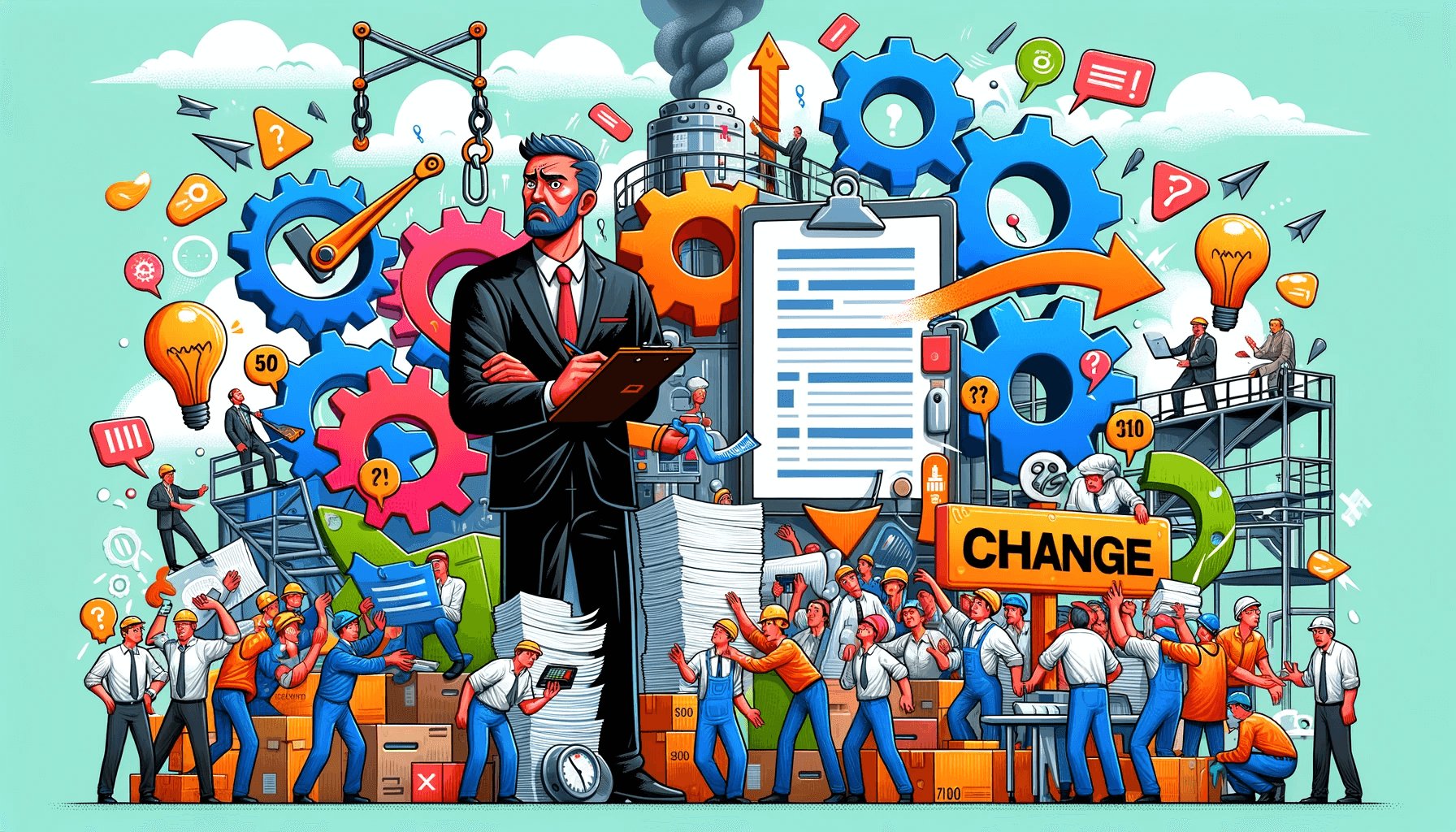Common Challenges in OEE Implementation and How to Overcome Them
Implementing Overall Equipment Effectiveness (OEE) in a manufacturing environment can be transformative, driving significant improvements in productivity, efficiency, and quality. However, many companies face common challenges that can impede the successful adoption of OEE practices.
OEE Implementation steps
From a lack of understanding and inaccurate data collection to resistance from staff and integration issues, these hurdles can be daunting. This article aims to identify these typical challenges and provide actionable solutions to help manufacturers with OEE implementation steps, ensuring a smooth and effective OEE implementation that leads to measurable operational gains. After all Industry 4.0 and IoT coming on strongly we can not afford not to implement OEE.
One of the primary challenges in OEE implementation is the lack of understanding and awareness among employees and management. Without a clear comprehension of what OEE entails and its benefits, it can be difficult to gain the necessary buy-in from all levels of the organisation. This can lead to half-hearted efforts and ultimately, unsuccessful implementation.
To address this, companies should invest in comprehensive training programs that educate the workforce on the importance of OEE, how it impacts overall productivity, and the specific roles each employee plays in its successful implementation. Workshops, seminars, and ongoing online resources can be valuable tools in building this foundational knowledge and fostering a culture that embraces continuous improvement. The only way to grow is to follow the primary Lean Manufacturing Principles.
Enhancing Awareness and Training
A crucial first step in overcoming OEE implementation challenges is to enhance awareness and provide thorough training across the organisation. If look at our own keyword analysis, it shows that terms like "OEE training programs," "OEE workshops," and "OEE awareness" are highly relevant and searched for by industry professionals. Companies should focus on conducting detailed OEE workshops that cover the fundamental concepts, benefits, and real-world applications of OEE.
Additionally, developing online training modules can provide ongoing support and flexibility for employees to learn at their own pace. These initiatives not only build a solid understanding of OEE but also foster a proactive mindset towards continuous improvement, which is essential for sustaining high levels of equipment effectiveness. By emphasising the importance of OEE and equipping the workforce with the necessary knowledge, companies can lay a strong foundation for successful implementation.
Implementing OEE for Accurate Data Collection
Implementing oee for Accurate data collection is vital for effective OEE implementation, yet it remains a common stumbling block for many manufacturers. Real-time manufacturing data collection, OEE data accuracy, and "manufacturing data tools are propably terms you are familiar with! Inaccurate or incomplete data can lead to misguided decisions and obscure the true performance of equipment. To tackle this challenge, companies should invest in advanced data collection tools that provide real-time monitoring and reporting.
Implementing automated systems that track performance metrics can significantly reduce the likelihood of human error and ensure that data is both accurate and reliable. These systems can capture critical information on availability, performance, and quality, offering a comprehensive view of the manufacturing process. By leveraging accurate data, manufacturers can make informed decisions that drive improvements in OEE and overall operational efficiency.
Managing Resistance to Change
Resistance to change is a common challenge when implementing new practices like OEE. Change management in shop floor manufacturing and employee engagement strategies are crucial in addressing this issue.
Employees and even management may be hesitant to adopt new systems due to comfort with existing processes or fear of increased scrutiny. Overcoming this resistance requires a strategic approach to change management. Engaging leadership to champion the change is critical, as support from the top can influence the entire organisation. Communicating the benefits of OEE clearly and consistently - such as increased efficiency, reduced downtime, and improved product quality - can help in winning over sceptics.
Additionally, sharing success stories and case studies from similar industries can demonstrate the tangible advantages of OEE implementation. Involving employees in the process, seeking their input, and addressing their concerns can also foster a sense of ownership and reduce resistance. By creating an inclusive environment where the benefits of change are well-communicated, companies can smooth the transition to OEE practices.
Seamless Integration with Existing Systems
Integrating OEE with existing systems can pose significant challenges, especially in environments with legacy equipment and software. OEE software integration, legacy systems in manufacturing and OEE tool compatibility highlight the importance of addressing this issue.
Choosing OEE software that is compatible with current systems is crucial. This may involve customising integration processes to ensure seamless data flow between new and old systems. Engaging with vendors who provide robust support and customisation options can facilitate a smoother integration process. With Globalreader you get both hardware (sensors, modules) and software (interface). Take a look at what our Operator interface has to offer!
Moreover, gradual implementation can help mitigate disruptions. Starting with a pilot program allows for the identification and resolution of potential issues before a full-scale rollout. This phased approach helps in adjusting processes and training staff incrementally, making the transition less overwhelming. By ensuring compatibility and adopting a strategic implementation plan, manufacturers can effectively integrate OEE practices into their existing systems, maximising the benefits without significant disruption. Your aim should be to become a fully optimised and a truly paperless Smart Factory.



